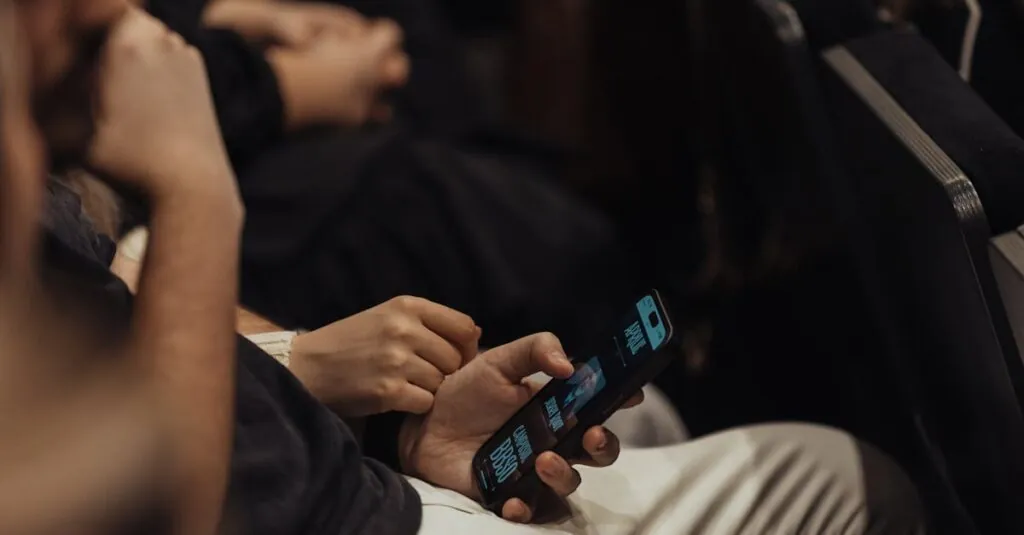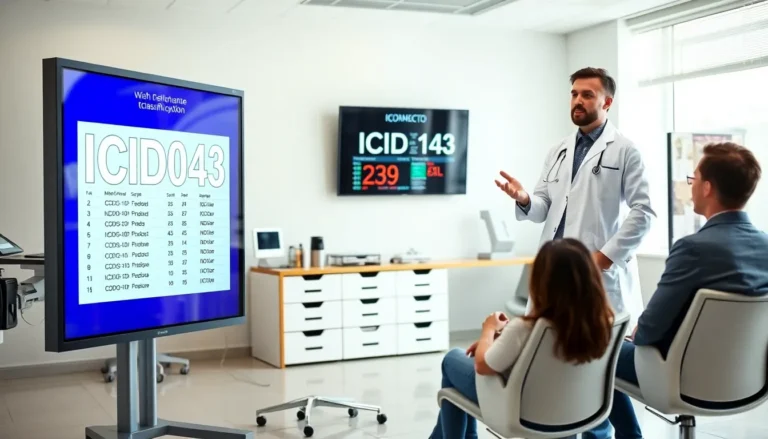Table of Contents
ToggleIn today’s fast-paced world, digital distractions are as common as coffee breaks. From scrolling through endless feeds to binge-watching the latest series, it’s no wonder our daily digital attention spans are shorter than a cat video. With notifications pinging every few seconds, staying focused feels like trying to catch a greased pig at a county fair.
Understanding Daily Digital Attention
Daily digital attention refers to the amount of mental focus individuals allocate to digital content each day. This attention spans various activities, including social media engagement, video watching, and online surfing.
Definition of Daily Digital Attention
Daily digital attention describes users’ time and focus spent interacting with digital devices. It includes actions like browsing websites, reading articles, and playing video games. Recognizing how much time is consumed by these activities clarifies the impact of digital distractions. Tracking usage statistics reveals trends in attention spans due to constant engagement with technology.
Importance in Today’s Society
Daily digital attention plays a crucial role in communication and entertainment. Many individuals rely on digital platforms to connect with others and stay informed. Excessive digital exposure often leads to reduced productivity at work or school. Balancing screen time with offline activities promotes better mental health. It’s essential for people to understand their daily digital habits to improve focus and interpersonal relationships.
Factors Influencing Daily Digital Attention
Daily digital attention reflects how individuals engage with digital content. Several factors impact this attention span, including age and usage patterns.
Age and Demographics
Age significantly affects digital attention. Young adults and teenagers tend to spend more time on social media and streaming services compared to older adults. In a study conducted in 2022, individuals aged 18-29 spent an average of 3.8 hours daily on social media, while those over 60 averaged only 1.3 hours. Additionally, millennials and Gen Z’s preference for mobile devices results in shorter attention spans due to the constant influx of notifications. Gender also plays a role, with studies showing that women often engage more with social media platforms than men, shaping how attention is distributed across digital content.
Digital Device Usage Patterns
Device choices influence digital attention levels. Mobile phones account for approximately 70% of global digital media time, according to recent reports. Users prefer mobile platforms for quick access to information, leading to distractions and fragmented attention. Laptops and tablets are often used for longer content consumption, like video watching or reading articles, which can enhance engagement but also encourages multitasking. Furthermore, the rise of smart devices has increased the frequency of digital interactions throughout the day. People receive alerts, messages, and updates all the time, which can disrupt focus and draw attention away from meaningful activities.
Effects of Daily Digital Attention
Daily digital attention significantly impacts both mental health and productivity. Understanding these effects remains crucial in a world increasingly centered on screens.
Impact on Mental Health
Excessive digital attention leads to increased anxiety and depression. Individuals frequently scrolling through social media encounter constant comparisons, impacting self-esteem negatively. Research indicates that prolonged exposure to curated online lives correlates with feelings of inadequacy. Furthermore, disrupted sleep patterns arise from late-night device usage, contributing to overall mental fatigue. Engaging with digital content can diminish real-life social interactions, further isolating individuals. Therefore, tracking digital engagement becomes essential for maintaining mental well-being.
Influence on Productivity
Shortened attention spans directly affect productivity levels. Employees find it challenging to concentrate on tasks when inundated with notifications. Data show that constant digital distractions reduce work efficiency by up to 40%. Quick transitions between tasks can fragment focus, making it harder to complete projects effectively. In addition, increased screen time equals less time for skill development and creative thinking. Effective time management strategies, such as scheduled breaks from digital devices, help optimize productivity. Balancing digital engagement with offline activities enhances focus and work output.
Strategies to Manage Daily Digital Attention
Practicing effective strategies can significantly improve daily digital attention. Implementing structured approaches aids in reducing distractions and enhances focus on meaningful tasks.
Setting Boundaries
Establishing specific time frames for digital usage fosters improved concentration. Individuals can designate tech-free zones at home, promoting face-to-face interactions. Setting daily limits on social media and streaming time, such as two hours for social applications, encourages healthier habits. Personal commitments to turn off devices an hour before bedtime enhance sleep quality, leading to better mental clarity. Prioritizing offline activities not only builds interpersonal connections but also strengthens the ability to focus in daily tasks.
Utilizing Digital Wellbeing Apps
Adopting digital wellbeing apps provides real-time feedback on screen time. These applications track usage patterns, helping users understand their engagement levels with digital content. Features such as usage statistics and scheduled downtime encourage mindful consumption. Popular applications like Forest and Moment promote focus by allowing users to set goals and monitor progress. With these apps, individuals can find balance and consciously allocate their time towards priority activities, boosting overall productivity.
Navigating daily digital attention is crucial in a world filled with distractions. By understanding how digital engagement affects focus and mental health, individuals can make informed choices about their screen time. Implementing boundaries and mindful strategies can lead to improved productivity and well-being.
Balancing online activities with offline interactions not only enhances concentration but also fosters deeper connections with others. As technology continues to evolve, staying aware of its impact on daily life will empower individuals to take control of their attention and cultivate a healthier digital lifestyle.







